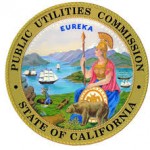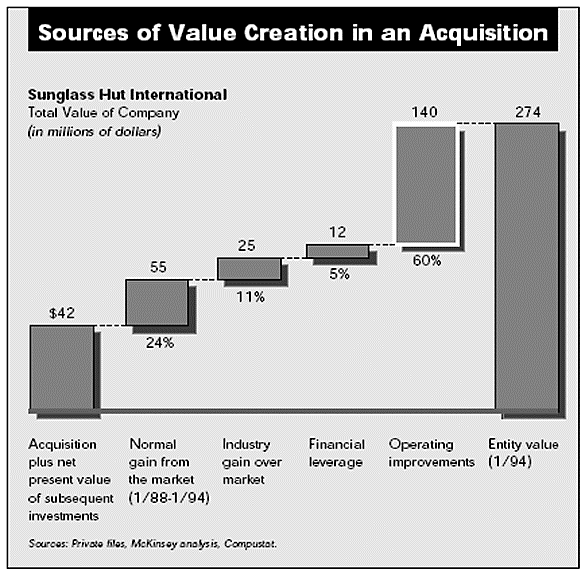Appleton Greene News
Service objectives
The following list represents the Key Service Objectives (KSO) for the Appleton Greene Sustainable Development service.
Sustainable development
 Sustainable development is development that meets procurement goals while maintaining the ability of natural systems to continue to provide the natural resources and environmental services upon which the economy and society depend. Sustainable development is the organizing principle for providing resources necessary for the needs of current and future generations. It meets the needs of the present without compromising the ability of future generations to meet their own needs. Two sectors, water and energy, are critical candidates for any sustainability program. Both are in a current state of transition, and both can include a variety of options for customers – from choices in supply to changes in operations. Water: the procurement, treatment, distribution, and waste water treatment are energy intensive, and proposed methods to address water quality and availability concerns as well as adapting to climate variations are even more energy intensive and costly. Improvements in water system energy efficiency and the development of alternatives like renewable energy can be quite cost effective options with rapid paybacks, and can not only improve operating budgets but can significantly reduce greenhouse gas emissions with relatively minor costs. The digitization of water system data also offers unique opportunities in system optimization, customer service, and the development of new revenue channels. The water infrastructure repair global market is being driven by unprecedented need for water infrastructure repair, global and regional population growth, climate changes, and new and emerging technologies. Energy: the intersection of dropping renewable energy costs, plummeting energy storage costs, and the digitization of utility data, and the imposition of greenhouse gas reduction targets is forcing utilities to radically change their business model.. The monolithic electric utilities that generated power and then shipped it to customers over their wires are being forced by the availability of customer generation, energy storage, electric vehicles, digital appliances, and enhanced customer information to change their business plan in order to survive. This transition will change what opportunities customers have for electric service, what customers pay for electricity services, how they pay for those services, what customer responsibilities are with regards to their operation, and will present opportunities and challenges as incentives, and penalties, as well as changes in responsibilities become more common in the new electric utility industry.
Sustainable development is development that meets procurement goals while maintaining the ability of natural systems to continue to provide the natural resources and environmental services upon which the economy and society depend. Sustainable development is the organizing principle for providing resources necessary for the needs of current and future generations. It meets the needs of the present without compromising the ability of future generations to meet their own needs. Two sectors, water and energy, are critical candidates for any sustainability program. Both are in a current state of transition, and both can include a variety of options for customers – from choices in supply to changes in operations. Water: the procurement, treatment, distribution, and waste water treatment are energy intensive, and proposed methods to address water quality and availability concerns as well as adapting to climate variations are even more energy intensive and costly. Improvements in water system energy efficiency and the development of alternatives like renewable energy can be quite cost effective options with rapid paybacks, and can not only improve operating budgets but can significantly reduce greenhouse gas emissions with relatively minor costs. The digitization of water system data also offers unique opportunities in system optimization, customer service, and the development of new revenue channels. The water infrastructure repair global market is being driven by unprecedented need for water infrastructure repair, global and regional population growth, climate changes, and new and emerging technologies. Energy: the intersection of dropping renewable energy costs, plummeting energy storage costs, and the digitization of utility data, and the imposition of greenhouse gas reduction targets is forcing utilities to radically change their business model.. The monolithic electric utilities that generated power and then shipped it to customers over their wires are being forced by the availability of customer generation, energy storage, electric vehicles, digital appliances, and enhanced customer information to change their business plan in order to survive. This transition will change what opportunities customers have for electric service, what customers pay for electricity services, how they pay for those services, what customer responsibilities are with regards to their operation, and will present opportunities and challenges as incentives, and penalties, as well as changes in responsibilities become more common in the new electric utility industry.
Water and energy are both highly stressed sectors currently undergoing massive transformations. This transition phase is unsettled and presents many opportunities for customers to assist in guiding the discussion and development of the future regulatory environment, protect past investments, and to evaluate new investments to reduce their operating costs and comply with regulatory mandates like greenhouse gas emission reductions. Water: the procurement, treatment, distribution, and wastewater treatment are energy intensive, and proposed methods to address water quality and availability concerns as well as adapting to climate variations are even more energy intensive and costly. Improvements in water system energy efficiency and the development of alternatives like renewable energy can be quite cost effective options with rapid paybacks, and can not only improve operating budgets but can significantly reduce greenhouse gas emissions with relatively minor costs. The digitization of water system data also offers unique opportunities in system optimization, customer service, and the development of new revenue channels. The water infrastructure repair global market is being driven by unprecedented need for water infrastructure repair, global and regional population growth, climate changes, and new and emerging technologies. Energy: the intersection of dropping renewable energy costs, plummeting energy storage costs, and the digitization of utility data, and the imposition of greenhouse gas reduction targets is forcing utilities to radically change their business model. The monolithic electric utilities that generated power and then shipped it to customers over their wires are being forced by the availability of customer generation, energy storage, electric vehicles, digital appliances, and enhanced customer information to change their business plan in order to survive. This transition will change what opportunities customers have for electric service, what customers pay for electricity services, how they pay for those services, what customer responsibilities are with regards to their operation, and will present opportunities and challenges as incentives, and penalties, as well as changes in responsibilities become more common in the new electric utility industry. New and emerging technologies and policies present challenges for many customers. Customer need guidance from an active and knowledgeable participant in the transition. Knowledge of the available technologies as well as the transition environment and the regulatory framework that is being modified is essential for positioning customers to take advantage of these changes and position themselves for the future. – Appleton Greene & Co Global
Business continuity
 Business continuity, that is to say, maintaining a successful business, depends upon addressing both the demand and supply (production) side. A business continuity plan consists of: 1) Performing a business impact analysis, 2) Identifying recovery strategies, 3) Developing overarching plan and individual unit plans, 4) training and exercising plans, 5) Analysing lessons learned, 6) Improving processes. The key to this process is the business impact assessment. Business continuity has two sub branches in its taxonomy; internal events and external events that could disrupt business operations. A business impact assessment identifies: what risk scenarios are relevant, mission critical functions, critical resources (including staff, equipment, facilities, materials, and systems), time frame for each mission-critical function to recover, and how to protect mission essential functions and critical resources and mitigate interruptions. Emphasis for this consulting service is water and energy. While water and energy are inextricably linked, they are often evaluated independently of each other. Combining their evaluation into a more integrated approach to address the challenges and opportunities of the water-energy nexus can have significant benefits for organizations and companies.
Business continuity, that is to say, maintaining a successful business, depends upon addressing both the demand and supply (production) side. A business continuity plan consists of: 1) Performing a business impact analysis, 2) Identifying recovery strategies, 3) Developing overarching plan and individual unit plans, 4) training and exercising plans, 5) Analysing lessons learned, 6) Improving processes. The key to this process is the business impact assessment. Business continuity has two sub branches in its taxonomy; internal events and external events that could disrupt business operations. A business impact assessment identifies: what risk scenarios are relevant, mission critical functions, critical resources (including staff, equipment, facilities, materials, and systems), time frame for each mission-critical function to recover, and how to protect mission essential functions and critical resources and mitigate interruptions. Emphasis for this consulting service is water and energy. While water and energy are inextricably linked, they are often evaluated independently of each other. Combining their evaluation into a more integrated approach to address the challenges and opportunities of the water-energy nexus can have significant benefits for organizations and companies.
.
Resilience
 Resilience is the ability an organization has to quickly adapt to disruptions while maintaining continuous operations and safeguarding people, assets and overall brand equity. Business resilience goes a step beyond disaster recovery by offering post-disaster strategies to avoid costly downtime, shore up vulnerabilities and maintain business operations in the face of additional, unexpected breaches. Availability, recovery, security and compliance processes and techniques must be managed concurrently to create an infrastructure that can sustain true business resiliency. One of the key challenges is assessing risk versus cost. How vulnerable are you and how much will it cost to protect you? Business resiliency is the maturation and integration of the individual disciplines of crisis management, incident response, business continuity, disaster recovery and pandemic planning into one integrated set of processes and capabilities that work collectively. This approach allows businesses and organizations to have minimal disruption in the event of an incident that affects the entire organization. Business resiliency is the ability of a business to spring back from a disruption to its operations. Business continuity and disaster recovery have historically focused on a business’ ability to recover from a disruption. Recovery implies that there was downtime during which business operations were unavailable. Resiliency, on the other hand, implies that an event may have affected a business’ operations but the business was never completely unavailable. All organizations experience failures or other impacts to business operations at some point, so it is critical for all services to be both designed for uptime and prepared for failures. Resiliency is tightly aligned to business strategy. It takes a holistic approach to risk management, and it strives to minimize outage time by embedding resiliency and workarounds into everything the organization does–from business processes to corporate and data center site selection to enterprise architecture and application development.
Resilience is the ability an organization has to quickly adapt to disruptions while maintaining continuous operations and safeguarding people, assets and overall brand equity. Business resilience goes a step beyond disaster recovery by offering post-disaster strategies to avoid costly downtime, shore up vulnerabilities and maintain business operations in the face of additional, unexpected breaches. Availability, recovery, security and compliance processes and techniques must be managed concurrently to create an infrastructure that can sustain true business resiliency. One of the key challenges is assessing risk versus cost. How vulnerable are you and how much will it cost to protect you? Business resiliency is the maturation and integration of the individual disciplines of crisis management, incident response, business continuity, disaster recovery and pandemic planning into one integrated set of processes and capabilities that work collectively. This approach allows businesses and organizations to have minimal disruption in the event of an incident that affects the entire organization. Business resiliency is the ability of a business to spring back from a disruption to its operations. Business continuity and disaster recovery have historically focused on a business’ ability to recover from a disruption. Recovery implies that there was downtime during which business operations were unavailable. Resiliency, on the other hand, implies that an event may have affected a business’ operations but the business was never completely unavailable. All organizations experience failures or other impacts to business operations at some point, so it is critical for all services to be both designed for uptime and prepared for failures. Resiliency is tightly aligned to business strategy. It takes a holistic approach to risk management, and it strives to minimize outage time by embedding resiliency and workarounds into everything the organization does–from business processes to corporate and data center site selection to enterprise architecture and application development.
Dr. House PhD MS MA is an Accredited Senior Consultant (ASC) at Appleton Greene
 Appleton Greene & Co Global – Dr. House is an approved Senior Consultant at Appleton Greene and he has experience in management, production and finance. He has achieved a Doctorate in Engineering and Economics, a Master of Science in Environmental Studies and a Masters of Arts in Secondary Education. He has industry experience within the following sectors: Utilities; Energy; Consultancy; Government and Agriculture. He has had commercial experience within the following countries: United States of America; Mexico; Thailand; and United Kingdom, or more specifically within the following cities: Los Angeles CA; San Francisco CA; Mexico City; Bangkok and London. His personal achievements include: saved $35 million California water; water energy nexus implementation; California energy efficiency training audits and renewable energy development tariff rate evaluation. His service skills incorporate: policy guidance; strategic planning; project evaluation; renewable implementation and energy efficiency.
Appleton Greene & Co Global – Dr. House is an approved Senior Consultant at Appleton Greene and he has experience in management, production and finance. He has achieved a Doctorate in Engineering and Economics, a Master of Science in Environmental Studies and a Masters of Arts in Secondary Education. He has industry experience within the following sectors: Utilities; Energy; Consultancy; Government and Agriculture. He has had commercial experience within the following countries: United States of America; Mexico; Thailand; and United Kingdom, or more specifically within the following cities: Los Angeles CA; San Francisco CA; Mexico City; Bangkok and London. His personal achievements include: saved $35 million California water; water energy nexus implementation; California energy efficiency training audits and renewable energy development tariff rate evaluation. His service skills incorporate: policy guidance; strategic planning; project evaluation; renewable implementation and energy efficiency.
Water & Energy
Present day water and energy systems are interdependent. Water is used in all phases of energy production and electricity generation. Energy is required to extract, convey, and deliver water of appropriate quality for diverse human uses, and then again to treat wastewater prior to their return to the environment. While water and energy are inextricably linked, they are often evaluated independently of each other. Combining their analysis in a more integrated approach to address the challenges and opportunities of the water-energy nexus can have significant benefits for organizations and companies. For example, reducing water consumption almost always reduces energy use, but the energy benefit is rarely credited to the water reduction technology. Water: the procurement, treatment, distribution, and wastewater treatment are energy intensive, and proposed methods to address water quality and availability concerns as well as adapting to climate variations are even more energy intensive and costly. Improvements in water system energy efficiency and the development of alternatives like renewable energy can be quite cost effective options with rapid paybacks, and can not only improve operating budgets but can significantly reduce greenhouse gas emissions with relatively minor costs. The digitization of water system data also offers unique opportunities in system optimization, customer service, and the development of new revenue channels. The water infrastructure repair global market is being driven by unprecedented need for water infrastructure repair, global and regional population growth, climate changes, and new and emerging technologies. Energy: the intersection of dropping renewable energy costs, plummeting energy storage costs, and the digitization of utility data, and the imposition of greenhouse gas reduction targets is forcing utilities to radically change their business model.. The monolithic electric utilities that generated power and then shipped it to customers over their wires are being forced by the availability of customer generation, energy storage, electric vehicles, digital appliances, and enhanced customer information to change their business plan in order to survive. This transition will change what opportunities customers have for electric service, what customers pay for electricity services, how they pay for those services, what customer responsibilities are with regards to their operation, and will present opportunities and challenges as incentives, and penalties, as well as changes in responsibilities become more common in the new electric utility industry.
Operations improvement
Operations and process improvement enables organizations to increase effectiveness by understanding, optimizing and aligning activities and processes to maximize output and returns on improvement initiatives. By strategically integrating operational processes, people and technology, organizations can make more effective decisions, increase value and drive higher levels of efficiency organization-wide. It is critical for organizations to improve the performance of their personnel and operational processes to increase effectiveness. Operations improvement can require new resources, thinking, new methods and new techniques for monitoring and measuring so organizations can fully understand, optimize and align processes to achieve strategic objectives. All businesses and organizations need and use water and energy. Emphasis for this consulting service is water and energy. While water and energy are inextricably linked, they are often evaluated independently of each other. Combining their evaluation into a more integrated approach to address the challenges and opportunities of the water-energy nexus can have significant benefits for organizations and companies.Climate compliance
A relatively recent force that is impacting organizations and companies worldwide is response to climate change, both voluntary and mandated efforts. Water and energy are the two most fundamental ingredients of modern civilization and the use of water and the use of energy are intricately intertwined. Each of these commodities has a significant impact on the other. We consume massive quantities of water to generate energy, and we consume massive quantities of energy to deliver clean water. The extraction, treatment, distribution, and use of water followed by the collection and treatment of wastewater require a lot of energy; likewise, the production of energy requires a lot of water. The analysis of an organizations water and energy footprint simultaneously can provide significant strides in climate compliance. By evaluating the energy and resultant greenhouse gas emissions, reductions associated with water reductions can be a valuable compliance mechanism for any organization.
Adaptive strategies
Organizations and companies face more volatility, uncertainty, complexity, and ambiguity than ever before, requiring an expanded kind of approach to strategy. Three attributes are essential for survival in a changing environment: readiness, responsiveness, and resilience. Responsiveness (or agility) means the organization can respond quickly to changes in the environment and begin to act while plans are still being finalized; is flexible in process and structure; and can deal with short cycle times. Resilience (or robustness) is the ability an organization has to quickly adapt to disruptions while maintaining continuous operations and safeguarding people, assets and overall brand equity. Readiness (or anticipation) is a result of how well an organization stays in touch with its clients – the quantity and quality of information it obtains from customers, suppliers and other industry players. An adaptive strategy is a dynamic approach in which better-fitting strategies continuously evolve in response to change. It is applied via a 4 step process. Step 1 – Variation (or innovation). A company continually looks to vary the status quo by targeted innovation; natural or proactive modification of internal practices; responding to signals from the economy, customers, competitors; and by leveraging the innovative capabilities of external resources. Step 2 – Selection. The most promising variations/innovations are selected and tried out via pilot projects, limited and full-scale tests. Step 3 – Amplification (or scaling up). Those variations/innovations which show the greatest potential are scaled up. They become a permanent part of the organizations routines and offerings by allocating resources to them. Step 4 – Modulation. Modulation is simply fine tuning the application of the first 3 steps in response to what is happening in the environment and the organizations goals.
Increase efficiency
All organizations use both water and energy. The use of water and the use of energy are intricately intertwined in any organizations operation. The analysis of an organizations water and energy use simultaneously can provide significant efficiency increases. Technologies that reduce water use are generally also less energy intensive. Evaluating the energy reductions associated with water reduction options can be a valuable efficiency improvement indicator.
Regulatory compliance
Keeping abreast of regulatory compliance is an increasingly complicated task. Conforming to a myriad of ever changing rules, policies, standards and laws can be daunting. Regulatory compliance describes the goal that organizations aspire to achieve in their efforts to ensure that they are aware of and take steps to comply with relevant laws and regulations. Not only is it important to keep current on all the regulations impacting your organization, it is important to maintain a working knowledge of the various new technologies and options that are available to meet compliance requirements. Due to the increasing number of regulations and need for operational transparency, organizations are increasingly adopting the use of consolidated and harmonized sets of compliance controls. This approach is used to ensure that all necessary governance requirements can be met without the unnecessary duplication of effort and activity from resources. The analysis of an organizations water and energy use and options simultaneously can provide significant pathways to regulatory compliance. Evaluating and quantifying the energy reductions associated with water reduction options can be a valuable regulatory compliance tool.
Strategic awareness
Today, organizations are required to consciously deal with not just the speed of change but also with complexity, chaos, uncertainty, and paradox. Detecting changes in the external environment on a continual basis and knowing what these changes mean to your organization, and what needs to be done about them, is fundamental to success. It takes robust strategic awareness to effectively deal with the complexity and decipher the ambiguity to identify the trends and the new arrangements that are emerging. It is this robust strategic awareness that allows organizations to perceive and know where the world is going so that you can put a strategy in place to handle the impending hazards and the potential opportunities. A comprehensive knowledge of the current environment and upcoming trends is fundamental to strategic awareness. All organizations use both water and energy, and information about these two sectors is foundational to strategic awareness..
This service is primarily available to the following industry sectors:

Utilities
Energy: the intersection of dropping renewable energy costs, plummeting energy storage costs, the digitization of utility data and the imposition of greenhouse gas reduction targets is forcing utilities to radically change their business model. The monolithic electric utilities that generated power and then shipped it to customers over their wires are being forced by the availability of customer generation, energy storage, electric vehicles, digital appliances, and enhanced customer information to change their business plan in order to survive. This transition will change what opportunities customers have for electric service, what customers pay for electricity services, how they pay for those services, what customer responsibilities are with regards to their operation, and will present opportunities and challenges as incentives and penalties, as well as changes in responsibilities become more common in the new electric utility industry. Water: the procurement, treatment, distribution, and wastewater treatment are energy intensive, and proposed methods to address water quality and availability concerns as well as adapting to climate variations are even more energy intensive and costly. Improvements in water system energy efficiency and the development of alternatives like renewable energy can be quite cost effective options with rapid paybacks, and can not only improve operating budgets but can significantly reduce greenhouse gas emissions with relatively minor costs. The digitization of water system data also offers unique opportunities in system optimization, customer service, and the development of new revenue channels. The water infrastructure repair global market is being driven by unprecedented need for water infrastructure repair, global and regional population growth, climate changes, and new and emerging technologies. The combination of new information and communication technology and various distributed energy resources is enabling the creation and proliferation of new distributed energy systems, from micro-grids and virtual power plants to remote aggregation of controllable loads and smart charging systems for electric vehicle fleets. These distributed energy systems are enabling a diversity of new business models and have the potential to provide significant opportunities and value to energy consumers.

Energy
Sustainable Energy has three key components: effective utilization of fossil fuels, renewable energy development, and energy efficiency. Energy efficiency and renewable energy are said to be the twin pillars of sustainable energy future. Considerable progress is being made in the energy transition from fossil fuels to sustainable systems technologies that promote sustainable energy, include renewable energy sources, such as hydroelectricity, solar energy, wind energy, wave power, geothermal energy, bioenergy, tidal power and also technologies designed to improve energy efficiency. Costs have fallen dramatically in recent years, and continue to fall. Most of these technologies are either economically competitive or close to being so. Increasingly, effective government policies are supporting the transition to these alternatives. This sets sustainable energy apart from other renewable energy terminology such as alternative energy by focusing on the ability of an energy source to continue providing energy. Sustainable energy can produce some pollution of the environment, as long as it is not sufficient to prohibit heavy use of the source for an indefinite amount of time. Sustainable energy is also distinct from low-carbon energy, which is sustainable only in the sense that it does not add to the CO2 in the atmosphere.

Consultancy
People have always needed advice on how better to manage their affairs and make effective decisions. Biblical kings had prophets, Persian sultans had viziers, and Greek city states had the oracle at Delphi. Even the Mafia had their consigliere. Consultants can function as bridges for information and knowledge, and that external consultants can provide these bridging services more economically than client firms themselves. The functions of consulting services are commonly broken down into the following task categories: strategic management, operations management, industrial engineering, industrial/organizational psychology, organizational development, and project management. Consultants have specialized skills on tasks that would involve high internal coordination costs for clients, such as organization-wide changes or the implementation of information technology. In addition, because of economies of scale, their focus and experience in gathering information worldwide and across industries renders their information search less costly than clients trying to procure this information and knowledge themselves. Technological developments, emerging opportunities, and evolving policies are driving evolutionary as well as potentially disruptive changes in the current environment. Organizations and businesses will continue to need and rely upon qualified consultants to assist them in their adaptation to the changing world.

Government
Major functions of modern government include: foreign diplomacy; military defense; maintenance of domestic order; administration of justice; protection of civil liberties; providing a stable monetary system; the provision for public goods and services; promotion of economic growth and development; operation of social insurance programs and social welfare programs to address existing poverty and to protect the environment. There are a plethora of ever changing rules and regulations that government promulgates, particularly in the water and energy sectors. The emergence of climate change regulations and policies adds another layer of compliance on an already complicated regulatory environment. Keeping abreast of regulatory compliance is an increasingly complicated task. Conforming to the myriad of ever changing rules, policies, standards and laws can be daunting. Regulatory compliance describes the goal that organizations aspire to achieve in their efforts to ensure that they are aware of and take steps to comply with relevant laws and regulations. Not only is it important to keep current on all the regulations impacting your organization, it is important to maintain a working knowledge of the various new technologies and options that are available to meet compliance requirements. Due to the increasing number of regulations and need for operational transparency, organizations are increasingly adopting the use of consolidated and harmonized sets of compliance controls. This approach is used to ensure that all necessary governance requirements can be met without the unnecessary duplication of effort and activity from resources. The analysis of an organizations water and energy use and options simultaneously can provide significant pathways to regulatory compliance. Evaluating and quantifying the energy reductions associated with water reduction options can be a valuable regulatory compliance tool.

Agriculture
Water security and food security are inextricably linked. In the decade 1951-60 human water withdrawals were four times greater than the previous decade. Currently towards 35% of human water use is unsustainable, drawing on diminishing aquifers and reducing the flows of major rivers: this percentage is likely to increase if climate change impacts become more severe, populations increase, aquifers become progressively depleted and supplies become polluted and unsanitary. In the 1990s it was estimated that humans were using 40-50% of the globally available freshwater in the approximate proportion of 70% for agriculture, 22% for industry, and 8% for domestic purposes with total use progressively increasing. Climate change, with increasing variations in precipitation, is putting significant stresses on water usage worldwide. Drought is a major factor in agricultural productivity especially in developing regions. Set against the expected increase in population, changing demographics, and increases in non-food agriculture (such as for energy production) and serious conflicts are in our future. Sustainable agriculture consists of environmentally-friendly methods of farming that allow the production of crops or livestock without damage to human or natural systems. It involves preventing adverse effects to soil, water, biodiversity, surrounding or downstream resources – as well as to those working or living on the farm or in neighboring areas. The concept of sustainable agriculture extends intergenerationally, passing on a conserved or improved natural resource, biotic, and economic base rather than one which has been depleted or polluted. Elements of sustainable agriculture include permaculture, agroforestry, mixed farming, multiple cropping, and crop rotation. Water efficiency is being improved on a global scale by increased demand management, improved infrastructure, reduced losses, improved water productivity of agriculture, minimizing the water intensity (embodied water) of goods and services, addressing shortages in the non-industrialized world, concentrating food production in areas of high productivity, and planning for climate change, such as through flexible system design An promising direction towards sustainable development is to design systems that are flexible and reversible.
Bronze Service

Monthly cost: USD $1,500.00
Time limit: 5 hours per month
Contract period: 12 months
Bronze service includes:
01. Email support
02. Telephone support
03. Questions & answers
04. Professional advice
05. Communication management

SERVICE DESCRIPTION
The Bronze Client Service (BCS) for Sustainable Development provides clients with an entry level option and enables client contacts to become personally acquainted with Dr. House over a sustainable period of time. We suggest that clients allocate up to a maximum of 5 Key Employees for this service. Your Key Employees can then contact the consultant via email, whenever they feel that they need specific advice or support in relation to the consultant’s specialist subject. The consultant will also be proactive about opening and maintaining communications with your Key Employees. Your Key Employees can list and number any questions that they would like to ask and they will then receive specific answers to each and every query that they may have. Your Key Employees can then retain these communications on file for future reference. General support inquiries will usually receive replies within 48 hours, but please allow a period of up to 10 business days during busy periods. The Bronze Client Service (BCS) enables your Key Employees to get to know their designated Appleton Greene consultant and to benefit from the consultant’s specialist skills, knowledge and experience.
Silver Service

Monthly cost: USD $3,000.00
Time limit: 10 hours per month
Contract period: 12 months
Bronze service plus
01. Research analysis
02. Management analysis
03. Performance analysis
04. Business process analysis
05. Training analysis

SERVICE DESCRIPTION
The Silver Client Service (SCS) for Sustainable Development provides more time for research and development. If you require Dr. House to undertake research on your behalf, or on behalf of your Key Employees, then this would understandably require more time and the Silver Client Service (SCS) accommodates this. For example, you may want your consultant to undertake some research into your management, performance, business, or training processes, with a view towards providing an independent analysis and recommendations for improvement. If any research and development, or business analysis is required, then the Silver Client Service (SCS) is for you.
Gold Service

Monthly cost: USD $4,500.00
Time limit: 15 hours per month
Contract period: 12 months
Bronze/Silver service plus
01. Management interviews
02. Evaluation and assessment
03. Performance improvement
04. Business process improvement
05. Management training

SERVICE DESCRIPTION
The Gold Client Service (GCS) for Sustainable Development is intended for more detailed evaluation and assessment, that may require your Key Employees to have monthly meetings or interviews with Dr. House. These meetings and interviews can be conducted over the telephone, Skype, or by video conference if required. The consultant can also attend your business premises, an Appleton Greene office, or another mutually beneficial location, but please note that clients are responsible for the costs of any disbursements separately, including travel and accommodation. This service enables you to integrate the specific skills, knowledge and experience of your designated consultant into your Key Employee management team. The Gold Client Service (GCS) can also incorporate training workshops, business presentations and external meetings with customers, suppliers, associations, or any other business-related stakeholders.
Platinum Service

Monthly cost: USD $6,000.00
Time limit: 20 hours per month
Contract period: 12 months
Bronze/Silver/Gold service plus
01. Project planning
02. Project development
03. Project implementation
04. Project management
05. Project review

SERVICE DESCRIPTION
The Platinum Client Service (PCS) for Sustainable Development is our flagship service and will be required if you need Dr. House to facilitate the planning, development, implementation, management, or review of a particular project relating to his specialist subject, which would obviously require more time and dedication. This service enables you to reserve up to 12.5% of the consultant’s working month and provides a more hands-on service as and when required. If you need more time than this, then this can always be arranged, subject of course to the consultant’s ongoing availability. The benefit of having an external consultant involved in projects is they provide an independent perspective and are not influenced by internal politics, day-to-day responsibilities, or personal career interest. They provide objectivity, specific knowledge, skills and experience and will be entirely focused upon the tasks at hand. The Platinum Client Service (PCS) will provide your organization with a valuable resource as and when you need it.
Benefits
Sustainable development
- Water energy
- Resilience
- Regulatory compliance
- Climate adaptation
- Business continuity
- Strategic awareness
- Operations improvement
- Efficiency increases
- Alternatives evaluation
- Adaptive strategies
Regulatory compliance
- Alternatives evaluation
- Business continuity
- Regulatory intervention
- Climate compliance
- Strategic planning
- Adaptive strategies
- Strategic awareness
- Trends evaluation
- Cost minimization
- Technology review
Water energy
- Sustainable development
- Technology review
- Alternatives evaluation
- Adaptive strategies
- Efficiency improvements
- Operations optimization
- Regulatory compliance
- Futures evaluation
- Resilience
- Calculated risk
Clients
This service’s current clients or employers include:

Association of California Water Agencies (ACWA)
The Association of California Water Agencies (ACWA) is the largest state-wide coalition of public water agencies in the country. Its 430 public agency members collectively are responsible for 90% of the water delivered to cities, farms and businesses in California. ACWA’s mission is to assist its members in promoting the development, management and reasonable beneficial use of good quality water at the lowest practical cost in an environmentally balanced manner. Since its inception more than 100 years ago, ACWA has been a guiding force in California water policy and continues to help shape the laws, regulations and vision for advancing a sustainable, comprehensive water plan for the state’s future. In fulfilling its role, ACWA identifies issues of concern to the water industry and the public it serves; accumulates and communicates the best available scientific and technical information to the public and policy makers; facilitates consensus building; develops reasonable goals and objectives for water resources management; advocates sound legislation; promotes local service agencies as the most efficient means of providing water service; provides additional services of value to its members; and fosters cooperation among all interest groups concerned with stewardship of the state’s water resources.
Association of California Water Agencies (ACWA)- Click Here

California Attorney General (AG)
The Attorney General represents the People of California in civil and criminal matters before trial courts, appellate courts and the supreme courts of California and the United States. The Attorney General also serves as legal counsel to state officers and, with few exceptions, to state agencies, boards and commissions. The Attorney General also assists district attorneys, local law enforcement, and federal and international criminal justice agencies in the administration of justice. To support California’s law enforcement community, the Attorney General coordinates state-wide narcotics enforcement efforts, participates in criminal investigations and provides forensic science services, identification and information services and telecommunication support. In addition, the Attorney General establishes and operates projects and programs to protect Californians from fraudulent, unfair, and illegal activities that victimize consumers or threaten public safety. The Attorney General also enforces laws that safeguard the environment and natural resources. The Attorney General and our Department’s employees provide leadership, information and education in partnership with state and local governments and the people of California to: Enforce and apply all our laws fairly and impartially; Ensure justice, safety, and liberty for everyone; Encourage economic prosperity, equal opportunity and tolerance; Safeguard California’s human, natural, and financial resources for this and future generations.
California Attorney General (AG) – Click Here

California Public Utilities Commission (CPUC)
The California Public Utilities Commission regulates privately owned electric, natural gas, telecommunications, water, railroad, rail transit, and passenger transportation companies. The CPUC serves the public interest by protecting consumers and ensuring the provision of safe, reliable utility service and infrastructure at reasonable rates, with a commitment to environmental enhancement and a healthy California economy. They regulate utility services, stimulate innovation, and promote competitive markets, where possible. The CPUC regulates privately owned electric, natural gas, telecommunications, water, railroad, rail transit, and passenger transportation companies, in addition to authorizing video franchises. The CPUC plays a key role in making California a national and international leader on a number of clean energy related initiatives and policies designed to benefit consumers, the environment, and the economy. The CPUC is also at the forefront of communications issues and has developed a Consumer Protection Initiative to empower consumers and prevent fraud in the rapidly changing telecommunications industry. The CPUC has helped make California a national and international leader through ground breaking energy programs and policies designed to benefit consumers, the environment, and the economy. The CPUC’s energy initiatives include: Ensuring electric, natural gas, and propane gas system safety, and developing a safety culture in the utility companies Ensuring energy reliability; Implementing aggressive renewable energy goals; Creating ground breaking energy efficiency and demand response goals, and Advancing climate strategies.
California Public Utilities Commission (CPUC) – Click Here
Locations
This service is primarily available within the following locations:

United States
The United States has evolved from one of the younger countries in the world to a world leader in the relatively short span of a couple centuries. It is currently a world leader in energy innovations and water use. It is blessed with a robust economy, highly intelligent and trained workforce, and a historical pattern of inquisitiveness, innovation, and experimentation. The United States has the world’s largest national economy, with an estimated gross domestic product (GDP) of $16.7 trillion – 23% of global nominal GDP. The economy is fuelled by an abundance of natural resources and the world’s highest worker productivity, with per capita GDP being the world’s sixth-highest. While the U.S. economy is considered post-industrial, it continues to be one of the world’s largest manufacturers. The U.S. has the highest mean and second-highest median household income in the OECD as well as the highest average wage. The country accounts for 39% of global military spending, being the world’s foremost economic and military power, a prominent political and cultural force, and a leader in scientific research and technological innovation. The United States is the 2nd largest energy consumer (after China) in terms of total use. The majority of this energy is derived from fossil fuels: data shows 25% of the nation’s energy came from petroleum, 22% from coal, and 22% from natural gas. Nuclear power supplies 8.4% and renewable energy supplied 8%, which is mainly from hydroelectric dams and biomass but also includes other renewable sources such as wind power, geothermal and solar energy. Energy consumption has increased at a faster rate than domestic energy production over the last fifty years in the U.S. According to the Energy Information Administration’s statistics, the per-capita energy consumption in the US has been somewhat consistent from the 1970s to today. Most Americans are served by publicly owned water and sewer utilities. Eleven percent of Americans receive water from private (so-called “investor-owned”) utilities. In rural areas, cooperatives often provide drinking water. Finally, up to 15 percent of Americans are served by their own wells. Water supply and wastewater systems are regulated by state governments and the federal government. At the state level, health and environmental regulation is entrusted to the corresponding state-level departments. Public Utilities Commissions, or Public Service Commissions, regulate tariffs charged by private utilities. In some states they also regulate tariffs by public utilities. At the federal level, drinking water quality and wastewater discharges are regulated by the United States Environmental Protection Agency, which also provides funding to utilities through State Revolving Funds. Water consumption in the United States is more than double that in Central Europe, with large variations among the states.

Mexico
Poverty and income disparity has been a persistent problem in Mexico. While the recent exponential growth of the economy has caused an overall fall in the percentage of the population living in conditions of poverty, this fall has not been proportional to the general growth. 17% of the population lives below Mexico’s poverty line, making Mexico rank behind Kazakhstan, Bulgaria and Thailand. The overall poverty rate however is 44.2%. The economy of Mexico is the 15th largest in the world in nominal terms and the 11th largest by purchasing power parity, according to the International Monetary Fund. The economy contains rapidly developing modern industrial and service sectors, with increasing private ownership. Recent administrations have expanded competition in ports, railroads, telecommunications, electricity generation, natural gas distribution and airports, with the aim of upgrading infrastructure. As an export-oriented economy, more than 90% of Mexican trade is under free trade agreements (FTAs) with more than 40 countries, including the European Union, Japan, Israel, and much of Central and South America. Energy production in Mexico is managed by state-owned companies: the Federal Commission of Electricity and Pemex. Pemex, the public company in charge of exploration, extraction, transportation and marketing of crude oil and natural gas, as well as the refining and distribution of petroleum products and petrochemicals, is one of the largest companies in the world by revenue, making US $86 billion in sales a year. Mexico is the sixth-largest oil producer in the world, with 3.7 million barrels per day. In 1980 oil exports accounted for 61.6% of total exports; by 2000 it was only 7.3%. The largest hydro plant in Mexico is the 2,400 MW Manuel Moreno Torres Dam in Chicoasén, Chiapas, in the Grijalva River. This is the world’s fourth most productive hydroelectric plant. Mexico is the country with the world’s third largest solar potential. The country’s gross solar potential is estimated at 5kWh/m2 daily, which corresponds to 50 times the national electricity generation. Currently, there is over 1.8 million square meters of solar thermal panels installed in Mexico, while in 2005, there were 115,000 square meters of solar PV (photo-voltaic). The project named SEGH-CFE 1, located in Puerto Libertad, Sonora, Northwest of Mexico, will have capacity of 46.8 MW from an array of 187,200 solar panels when complete in 2013. All of the electricity will be sold directly to the CFE and absorbed into the utility’s transmission system for distribution throughout their existing network. At an installed capacity of 46.8 MWp, when complete in 2013, the project will be the first utility scale project of its kind in Mexico and the largest solar project of any kind in Latin America. Struggling with aging infrastructure, strapped resources, and poor access, privatization is being pitched as the cure to Mexico’s water woes. Mexico continues to grapple with water management problems resulting from a long period of unsustainable exploitation of both surface and groundwater resources in many areas. The root of such problems includes over-allocation of concessions, unsustainable extraction patterns, and inadequate regulation and enforcement of the water entitlements.

Thailand
Thailand is an emerging economy and is considered a newly industrialized country. Its economy is heavily export-dependent, with exports accounting for more than two-thirds of its gross domestic product (GDP). Thailand is the second-largest economy in Southeast Asia, after Indonesia. The industrial and service sectors are the main sectors in the Thai gross domestic product, with the former accounting for 39.2% of GDP. Thailand’s agricultural sector produces 8.4% of GDP – lower than the trade and logistics and communication sectors, which account for 13.4% and 9.8% of GDP respectively. The construction and mining sector adds 4.3% to the country’s gross domestic product. Other service sectors (including the financial, education and hotel and restaurant sectors) account for 24.9% of the country’s GDP. Telecommunications and trade in services are emerging as centers of industrial expansion and economic competitiveness. Thailand produces roughly one-third of the oil it consumes. It is the second largest importer of oil in SE Asia. Thailand is a large producer of natural gas, with reserves of at least 10 trillion cubic feet. After Indonesia, it is the largest coal producer in SE Asia, but must import additional coal to meet domestic demand. Ninety percent of Thai electrical generating capacity is conventional thermal. Oil-fired plants have been replaced by natural gas, which as of 2014 powers 75% of electrical generation. Coal-fired plants produce an additional 20%, with the remainder from biomass, hydro, and biogas. Like many countries in Asia, increasing population, economical, agricultural and industrial expansion in Thailand are the major causes of water quality in various water sources, including surface water, ground water and sea water to be deteriorated. High loading of pollutants from human activities beyond the water resource carrying capacity can contribute to degradation of water quality in the country. According to Thailand’s Power Development Plan for 2015-2036, the country intends to build 20 additional gas-powered electrical generating stations (17,728 MWe), nine “clean coal” power stations (7,390 MWe), and 14,206 MW of renewable energy, including hydro, a large proportion of which will be imported from Laos or Myanmar. Up to two nuclear plants are also in the plans. The role of imported hydro is an issue. In 2015, hydro accounts for approximately 7% of the Thailand’s power output. Under the plan, it will rise to 15-20% by 2036, and additional hydro will be imported from the Xayaburi Dam on the Mekong River and from the Hat Gyi and Mong Ton dams in Myanmar. In general, the water quality of water resources in Thailand is in fair condition with a significant trend of improvement. However, the surface water quality of major rivers, lower Chao Praya, Tha Chin, Lam Takhong and Songkhla Lake, particularly in the areas where receiving pollutants discharged from industrial, agricultural or populated areas. Similarly, the coastal water in the Inner Gulf and certain highly populated areas of the Outer Gulf of Thailand are in poor quality, particularly in the areas into which four main rivers flowing (Mae Klong, Tha Chin, Chao Phraya and Bang Pakong Rivers). Despite the currently good condition of the coastal water quality, high levels of significant pollutants are closely monitored in many densely-populated and/or tourist areas of the Andaman Sea.

United Kingdom
The United Kingdom is a developed country and has the world’s fifth-largest economy by nominal GDP. The UK is considered to have a high-income economy and is categorized as very high in the Human Development Index, currently ranking 14th in the world. It was the world’s first industrialized country and the world’s foremost power during the 19th and early 20th centuries. The UK has a partially regulated market economy. Based on market exchange rates the UK is today the fifth-largest economy in the world and the second-largest in Europe after Germany. The UK service sector makes up around 73% of GDP. London is one of the three “command centers” of the global economy (alongside New York City and Tokyo), it is the world’s largest financial centre alongside New York, and it has the largest city GDP in Europe. Tourism is very important to the British economy and with over 27 million tourists arriving, the United Kingdom is ranked as the sixth major tourist destination in the world and London has the most international visitors of any city in the world. Energy use in the United Kingdom stood at 37.83 MWh per capita in 2010 compared to a world average of 21.54 MWh. In 2012, total electricity consumed was 317.5 TWh. Public water supply and sanitation in the United Kingdom is characterized by universal access and generally good service quality. An important feature of the sector in the United Kingdom compared to other developed countries is the diversity of institutional arrangements between the constituting parts of the UK (England and Wales; Scotland; and Northern Ireland). Successive UK governments have outlined numerous commitments to reduce carbon dioxide emissions. One such announcement was the Low Carbon Transition Plan, which aimed to generate 30% electricity from renewable sources, and 40% from low carbon content fuels by 2020. Notably, the UK is one of the best sites in Europe for wind energy, and wind power production is its fastest growing supply, in 2014 it generated 9.3% of the UK’s total electricity.

Myanmar
Myanmar, also known as Burma, is a sovereign state in Southeast Asia bordered by China, Thailand, India, Laos and Bangladesh. One-third of Burma’s total perimeter of 1,930 kilometres forms an uninterrupted coastline along the Bay of Bengal and the Andaman Sea. Its population of over 60 million makes it the world’s 24th most populous country and, at 676,578 km (261,227 sq mi), it is the world’s 40th largest country and the second largest in Southeast Asia. The country has been under military control since a coup d’état in 1962. Burma is a country rich in precious stones, oil, natural gas and other mineral resources. In 2011, its GDP stood at US$82.7 billion and was estimated as growing at an annual rate of 5.5%. Myanmar is one of the poorest nations in Southeast Asia, suffering from decades of stagnation, mismanagement and isolation. The lack of an educated workforce skilled in modern technology hinders Myanmar’s economy, although recent reforms and developments carried out by the new government, in collaboration with foreign countries and organizations aim to make this a thing of the past. Inflation is a serious problem for the economy. Myanmar lacks adequate infrastructure. Railways are old and rudimentary, with few repairs since their construction in the late 19th century. Energy shortages are common throughout the country including in Yangon and only 25% of the country’s population has electricity. The military government has the majority stakeholder position in all of the major industrial corporations of the country (from oil production and consumer goods to transportation and tourism). In recent years, both China and India have attempted to strengthen ties with the government for economic benefit. Many nations, including the United States and Canada, and the European Union, have imposed investment and trade sanctions on Myanmar. The United States and European Union eased most of their sanctions in 2012. Foreign investment comes primarily from China, Singapore, the Philippines, South Korea, India, and Thailand. Myanmar, a country that has abundant energy resources, particularly hydropower and natural gas, is one of the five major energy exporters in the region, particularly of natural gas. The country’s primary energy supply includes coal, oil, gas, hydropower, and biomass. The current approach to energy in Myanmar is of centralized planning, large-scale projects and an emphasis on exporting energy. The government intends to push ahead with plans to increase Burma’s reliance on coal-fired power plants to 33 percent of the country’s total generating capacity by 2030, according to a deputy minister from the Ministry of Electric Power.
Testimonials

Utilities
“While we have used Appleton Greene bespoke programs on a number of occasions to great effect, it is always preferable to purchase standard (off-the-shelf) programs where at all possible, because they encompass a wider variety of users who have together all contributed towards fine tuning the programs’ efficiency and functionality. The more a program is used, the better it becomes given time. A good Appleton Greene program is like a good wine, tried and tested ingredients and perfected over a sustainable period of many years.”
A quotation taken from a client reference within the Utilities industry.

Energy
“Business transformation is achieved through challenging existing business processes. Appleton Greene programs constitute useful tools which can be used in order to facilitate this process. Practical in their approach, they prove to be cost-effective, time-effective and process-effective.”
A quotation taken from a client reference within the Energy industry.

Consultancy
“It is definitely a major advantage that Appleton Greene is able to provide tangible products to their clients. It is easy for clients to identify with their services, they can see them, understand them and engage with them. Appleton Greene tenaciously sticks to what they know and do best, corporate training. This ensures that there is never any conflict of interests.”
A quotation taken from a client reference within the Consultancy industry.

Government
“Diplomacy and discretion are understandably important components of the way in which we deliver products and services to our customers. We also appreciate these qualities in our own product and service suppliers. I like the fact that Appleton Greene does not inflict knowledge upon its clients in the same way that many traditional learning providers do. Their programs appear to feature ever-changing processes which are constantly updated and are directly influenced by client needs and demands and this contributes to a mutually flexible approach to learning, which proves both productive and sustainable.”
A quotation taken from a client reference within the Government industry.

Agriculture
“We are all usually consumed with time management in this industry. Everything has a predetermined shelf life. Interestingly enough however, Appleton Greene achieves time sensitive performance by slowing things down. It allows companies to implement and benefit from each part of the service process while working through the programs, instead of having to wait until they are completed. The result is that you do not necessarily care too much about how long the programs take to implement, because the benefits are being realized all of the way through.”
A quotation taken from a client reference within the Agriculture industry.
Personal Profile
Mr Chicles is an approved Certified Learning Provider (CLP) at Appleton Greene who is a business leader and strategist with broad experience in the global multi-industrial, aerospace and defense sectors. He is a seasoned operational leader of global industrial businesses, leading transformational strategies in highly competitive markets.
As a senior, C-suite strategist for multiple major industrial corporations he has led multiple mergers, acquisitions, divestitures and restructurings, as well as corporate break-ups and spin-offs. He has a distinguished track record of successful transformations of complex organizations in dynamic and uncertain market conditions while engendering the trust and buy-in of employees, customers, vendors, owners, corporate leadership and boards of directors.
A highly engaged leader at the personal and team level he has demonstrated the ability to engender effective senior teams and boards. He’s also an active mentor, teacher and community leader.
Mr Chicles is an active board member with AES Seals, global leader in sustainable reliability engineering, and Micro Technologies Inc, an electronics and advanced manufacturing company. He is a principal partner with ProOrbis Enterprises®, a management science consultancy with premier clients such as the US Navy and PwC, as well as the principal of Xiphos Associates™, a management and M&A advisory. Recently, he served as Board Director and Chairman of Global Business Development with Hydro Inc. the largest independent pump and flow systems engineering services provider in the world.
He was President of ITT’s Industrial Process / Goulds Pumps business segment a global manufacturer of industrial pumps, valves, monitoring and control systems, and aftermarket services for numerous industries with $1.2 billion in revenue, 3,500 employees and 34 facilities in 17 countries. Preceding this role he served as Executive Vice President of ITT Corporation overseeing the creation of a newly conceived ITT Inc. following the break-up of the former ITT Corporation to establish its strategy and corporate functions such as HR, communications, IT and M&A, building the capabilities, policies and organizations for each.
He joined ITT Corporation’s executive committee as its strategy chief in 2006 and instituted disciplined strategic planning processes and developed robust acquisition pipelines to respond to rapidly changing markets. Created successful spin-offs of 2 new public corporations Exelis Inc. and Xylem Inc. ITT Corporation was named one of “America’s Most Respected Corporations” by Forbes for exemplary management and performance during his tenure there.
Before joining ITT, Mr Chicles served as Vice President of Corporate Business Development and head of mergers and acquisitions for American Standard / Trane Companies, where he initiated and closed numerous transactions and equity restructurings globally.
Additionally, he created and led the corporate real estate function which entailed more than 275 real estate transactions around the world.
He began his career at Owens Corning rising through the ranks in various operational roles to Vice President of Corporate Development.
Recently, he taught advanced enterprise strategy at Stevens Institute of Technology as an adjunct professor and still supports start-ups through the Stevens Venture Center. He continues to be active as the Founding Board Member with several successful start-up technology businesses and non-profit organizations. A community leader, Mr Chicles has held the role of President of the Greek Orthodox Cathedral in Tenafly, N.J., He also led trips abroad to Cambodia and Costa Rica to build sustainable clean-water solutions and affordable housing.
His formal education includes earning a Masters of Business Administration from The Wharton School at the University of Pennsylvania, and a Bachelors in Finance from Miami University.
(CLP) Programs

Appleton Greene corporate training programs are all process-driven. They are used as vehicles to implement tangible business processes within clients’ organizations, together with training, support and facilitation during the use of these processes. Corporate training programs are therefore implemented over a sustainable period of time, that is to say, between 1 year (incorporating 12 monthly workshops), and 4 years (incorporating 48 monthly workshops). Your program information guide will specify how long each program takes to complete. Each monthly workshop takes 6 hours to implement and can be undertaken either on the client’s premises, an Appleton Greene serviced office, or online via the internet. This enables clients to implement each part of their business process, before moving onto the next stage of the program and enables employees to plan their study time around their current work commitments. The result is far greater program benefit, over a more sustainable period of time and a significantly improved return on investment.

Appleton Greene uses standard and bespoke corporate training programs as vessels to transfer business process improvement knowledge into the heart of our clients’ organizations. Each individual program focuses upon the implementation of a specific business process, which enables clients to easily quantify their return on investment. There are hundreds of established Appleton Greene corporate training products now available to clients within customer services, e-business, finance, globalization, human resources, information technology, legal, management, marketing and production. It does not matter whether a client’s employees are located within one office, or an unlimited number of international offices, we can still bring them together to learn and implement specific business processes collectively. Our approach to global localization enables us to provide clients with a truly international service with that all important personal touch. Appleton Greene corporate training programs can be provided virtually or locally and they are all unique in that they individually focus upon a specific business function. All (CLP) programs are implemented over a sustainable period of time, usually between 1-4 years, incorporating 12-48 monthly workshops and professional support is consistently provided during this time by qualified learning providers and where appropriate, by Accredited Consultants.
Executive summary

Acquisitive Growth
In today’s context of changing markets, technologies and business models, and in conjunction with historic levels of available capital, acquisitive growth has emerged as an increasingly compelling approach to transformational growth. However, as has been empirically proven growth through acquisitions is fraught with pitfalls and inherently risky. Successfully acquisitive growth requires the confluence of many factors that go beyond the traditional phased steps of a typical process. In my experience success is a function of bringing together the elements of people, processes, and technologies into a set of capabilities that are custom-made for an organization’s particular strengths, circumstances and aspirations. Winning in today’s dynamic markets demands bold, unique and sustainable strategies. The following are the stages of such an approach that I have found to create high probability, profitable growth that stands the test of time.
Additionally, while the M&A industry has many advisors available, they tend not to be operating executives who have lived through all the elements I will lay out below. Many simplistic guidelines exist, however what its clear is that the difference between success and failure with acquisitive growth is not in rote adherence to some set of processes, rather it is found in the combination of process discipline and strong application of experiential, practical knowhow. The nature of this knowhow is to apply and allocate the elements below in a smart, efficient manner to achieve exemplary outcomes for the specific client’s unique situation and circumstances.
Strategy Development: Whether at the corporate level or in a specific business unit, clients would be taken through steps to clarify the markets and segments where they currently compete and where they want to go in the future, what differentiates them from competition, where capabilities need to be refined or built, and the various functional elements (e.g. systems, processes, structures, etc.) critical to sustain profitable growth. Approach would be a combination of review of current strategies/capabilities, interviews and facilitated discussions and structured workshops. Outcomes might be a strategy to bring a particular business into a new growth phase or to meet changing competitive environments, or at the enterprise level might entail “platform building” whereby new businesses, sectors or legs are build from the ground up through foundational initial acquisitions and subsequent organic and inorganic initiatives.
Market Focus: Where will we hunt for acquisition targets? If a company allows too-wide of a scope will find themselves suffering from expensive resource drains/distractions and/or dilute efforts. Therefore, following the alignment of enterprise/business strategies the process will seek to focus the market segments and the business criteria to qualify a company to be elevated to possible target.
Research Possible Targets: Simply put, take the descriptions and criteria from above and create lists of potential targets that might fit. Each such company is researched for available information, any currently available knowledge the client might have, etc. Output is a gross list of possible targets.
Target Approach: Utilizing a number of possible approaches, one that is appropriate for the client is determined. For example, some companies may have business development or sales teams who could participate in this stage, or on the other hand for reasons such as confidentiality, resource scarcity, etc this might need to be put into the hands of specific individuals (senior executives, dedicated M&A executives, 3rd party services, etc.). Each company is different, so this is an exercise of matching needs with capabilities. The objective is to screen the gross target list to elminate those who have “killer facts” such as big contingent liabilities, prohibitive complexity such as a company with a complex ownership structure, our any other aspects that renders a target not acceptable for the next step.
Cultivation: This is a very critical part of the overall process. The essence of this authentic, genuine and meaningful relationship-buidling which requires a combination of individuals with certain skill-sets to ‘sell’ the prospects on being acquired, patience and persistence. I have many approaches, processes and techniques that I have and continue to use to great effect in this regard. Output is a short list of interested targets who have moved to active discussions and in-person meetings.
Target Assessment: During the cultivation phase as it gets more advanced, a critical success factor for effective acquisitive growth is the ability to narrow the list with limited amounts of information. This is important because the next phase is quite intensive so any company can not practically thoroughly assess all such targets. In other words, how does a client gain the insights needed to do this? Some might consider this the ‘phase I due diligence’ whereby, prior to the engagement of expensive resources such as lawyers, accountants, etc., an overview of a target’s current status is determined. Through structured and open discussions, the client engages in discussions with the targets to learn as much as possible..
Preliminary Offer: Structuring of a term sheet or letter of intent based on finding to date. Depending on these findings, certain terms may be included to lay out a) value expectations; b) focus for due diligences and commitment to support it; and c) various legal terms typical for these agreements. This tend to be non-binding agreements meant to establish exclusivity of dealings for a period of time, high level terms that both parties agree to, and confidentiality. Given my background, I have the abilility to craft these documents with minimal legal cost.
Due Diligence: This is yet another element of acquisitions that can take several different forms. Depending on the situation and capabilities of both clients and targets, due diligence activites tend to have different scopes and approaches that match each particular circumstance. A simple example would be a private company target versus a public company. With the latter, sellers often limit potential acquirers to only publicly available information whereas private companies may have limited information at their disposal. Therefore, each approach must be designed for purpose, with the output being a customized plan for a particular target. This leads to both more efficient and cost effective processes as well as deeper insights to help with final decisions.
Deal Making: After the due diligence phase, and with a set of terms already agreed, the negotiations begin to finalized the terms of value, liabilities and the myriad legal and busses considerations that must be addressed and finalized. Whether as chief negotiator or as a trusted advisor to the same, I would bring my experience and talent to bear on this phase as well as some structured approaches/guidelines.
Integration Planning: Concurrent with the commencement of due diligence, full attention is required to determine the structure, resources, plans and teams for post-closing integration. Specific approaches and processes would be employed here to ensure that a proper integration leader is named (critical), robust but prioritized integration plans (e.g. IT and Finance integration might be a first priority for some companies), organizational and assimilation plans, and specific actions in several other area. Among the more difficult and critical elements of integration is culture. While culture is a key consideration in the pre-offer phases, it tends to be among the more challenging aspects to successful acquisitions and an area where experience from a career of hands-on accountability of acquisitions brings valuable insights. Several pro-active approaches can be introduced to the clients to determine which is best to employ with any particular integration.
Execution: From plans to execution requires much more than a roadmap. While such roadmaps are critical, it is the confluence of leadership and human capital, prioritized focused actions to achieve specific results, and finally sustainable integration to bring into the client’s company the full potential of the value creation possible. Tools exist and can be created to provide structure and management support to achieve this consistently.

Important And Strategic Elements Of A Growth By Acquisition Approach
This program has thus far concentrated on the role that acquisition strategies play in driving growth.
However, this assumes that the acquisitions are carried out properly on its own. Experience has shown that acquisitions may both produce and destroy value, with the execution of the transaction typically making the difference.
The following are crucial and strategic elements that support successful acquisitions:
• Considering strategic fit: Purchasing merely for the sake of purchasing is little more than management hubris. The target businesses should in some manner meet the needs of the buyer’s company strategy (i.e. product or service line, geographic reach, etc.).
• Addressing culture fit: Due to cultural mismatches between the two merging organizations, some of the largest mergers in history have failed. It is important to take into account a company’s culture because it directly affects how it creates value.
• Doing thorough due diligence: This guarantees that the buyer “looks beneath the hood” of the company they are buying and that the price they are looking to pay for the company reflects its intrinsic value.
• Integration: Even when the share purchase agreement’s ink dries, the deal is not finalized. The two businesses must now start an integration process to ensure that they grow into something greater than the sum of their individual parts.

Advantages Of Growth Acquisition
10 advantages of expanding your company through acquisition
If you’re deciding whether to enter into an acquisition contract, you might wish to take into account the following list of acquisition benefits:
1. Strengthens a failing business
The company you work for might be going through a period of underperformance, and an acquisition might be the answer. The ability to work together as a team rather than alone may be a key factor in the business’ success. As you get to share resources with the company you’re merging with, this can assist keep the business from failing.
2. Secure financing for growth
By making an acquisition, a company might gain access to money or other important assets that it might not otherwise have at its disposal. You can easily acquire these assets with the aid of an acquisition. The firm and its employees may benefit from collaborating with a company that has sufficient resources because the development of the enterprise is the ultimate objective.
3. Have access to skilled personnel of high caliber
An acquisition can aid in boosting both the amount and quality of employees who are knowledgeable about the demands of the company. The experienced staff often stays on the firm payroll after an acquisition is completed so they can integrate. Their business acumen contributes to the companies’ success after the merger.
4. Expand the company’s market.
The corporation may diversify its offerings of goods and services as a result of the acquisition. You can make a variety of goods and distribute them to various target consumers. An acquisition often aids in a company’s development and growth.
5. Increase market influence
When you enter a new market, making an acquisition might help you combine market forces and exercise control. The synergy it offers increases your market presence and market share. If you plan to establish branches or subsidiary businesses, an acquisition may assist you lessen competition and preserve market dominance.
6. Make sure more capital is available.
Because the company is now larger after an acquisition, access to cash is improved. Higher cash and funds are available and accessible as a result of the arrangement. Amountable capital may be extended to both companies according on the agreement the companies come to when making the purchase.
7. A decrease in training expenses
Through an acquisition, your company may be able to cut internal training costs by using resources from the other acquired company. The cost of employee training is not necessary if the acquired firm develops its resources. You can use the company’s resources, depending on their state of development, to train other employees so they can develop their skill set.
8. Boost the competitiveness of your business
A purchase can take care of the requirement to adhere to higher standards as a result of the development in technical advancements. By joining forces with a smaller company that possesses the required technologies, a larger corporation can maintain its competitive position. Long-term gains from this may accrue to both businesses.
9. Lower production expenses
If you can use another company’s production facilities, facilities, and storage space, merging with them can save your production expenses. Building these kinds of facilities can be expensive, but if the business expands, it might be necessary. Sharing resources could significantly affect the budget and production costs.
10. Enable you to fulfill stakeholder expectations
Stakeholders could have expectations for the company’s growth, and making an acquisition is an effective strategy to achieve such expectations. An purchase increases the likelihood of investment returns, which may gratify the stakeholders. The pressure from the stakeholders can be handled more easily by making an acquisition, and you can even surpass their expectations.

What To Watch Out For During The Entire Acquisition Growth Process
Investigating less evident problems within the target company is the goal of the due diligence procedure.
This ranges from contracts with sizable clients that are about to expire to potential legal proceedings resulting from past business decisions.
But there are a few things that the buyer should watch out for on a more strategic level.
They consist of the following:
• Culture: Even if this phrase keeps coming up, it is crucial to the success of M&As. The culture of the target company should be thoroughly researched by prospective buyers in order to have a sense of what they are getting into.
• Competitive Edge: Is the target company “plain vanilla” or does it engage in any activities that offer it a competitive advantage (which we’ll define as the capacity to produce above-market value over the long term)?
• Leadership: Would the target company’s leadership complement your own leadership team in a positive way? Spend some time with them while conducting your research to see whether this might be the case.
• Possibilities: Are there any prospects that the target firm can take advantage of that your business won’t be able to in the near future? Let’s say it’s because of a service or product line they offer that is expected to see rapid expansion.
• Synergies: Where do your two companies’ synergies lie? Are they really complementary, or does purchasing the target company actually run the danger of causing some of your company’s income streams to be cannibalized?
Program Objectives
The following list represents the Key Program Objectives (KPO) for the Appleton Greene Acquisitive Growth corporate training program.
Acquisitive Growth – Part 1- Year 1
- Part 1 Month 1 Business Assessment – Assessments can be incredibly valuable tools for organizations of all sizes. A comprehensive assessment methodology can help you evaluate your organization across multiple dimensions. But what are business assessments, what do they entail, and what are the benefits? Business assessments can help you identify areas of improvement and potential acquisitive growth. By taking a comprehensive approach, you can get an accurate picture of your organization’s strengths and weaknesses. Assessments can also help you develop actionable plans to improve your business. At their core, business assessments are all about providing clarity. When you’re feeling overwhelmed by the day-to-day details of running a business, it can be difficult to step back and get a clear picture of where your company is headed. That’s where assessments come in. By taking a comprehensive look at your company’s strengths and weaknesses, you can develop a clear road map for success. Assessments are an essential part of any business plan. By evaluating your company’s strengths and weaknesses, you can develop a roadmap for growth. Furthermore, assessments can help identify areas where your company may be at risk. By addressing these risks early on, you can avoid potential problems down the road. In addition, assessments can help you benchmark your company’s performance against others in your industry. This benchmarking process can give you valuable insights into areas where your company may need to improve. Ultimately, regular business assessments are a crucial tool for any organization that is looking to grow and thrive.
- Part 1 Month 2 Strategic Aspiration – A Winning Aspiration defines the purpose of your enterprise, its guiding mission and aspiration, in strategic terms. The first choice of the strategic choice cascade is winning aspirations. Here we ask, “what is our winning aspiration.” Strategically, our winning aspiration defines our purpose. Aspirations are a view of the future. Qualified with “winning,” it is the ideal future that we strive to achieve. Unless you deliberately set out to win, it is impossible to do so. A business that only wants to participate rather than succeed will invariably fall short of making the difficult decisions and large investments necessary to succeed. Aspirations that are too modest rather than lofty are much more harmful. Most businesses fail because they have low expectations.
- Part 1 Month 3 Segment Focus – Every company aspires to grow. But, in a market where competition is fierce, inorganic business growth requires insight and innovation. Segmenting the market and customers is among the most effective techniques to promote acquisitive growth. Yet as numerous businesses have shown, artful segmentation can result in a significant competitive advantage. The purpose of segmentation is to inform your marketing approach. Using this method, it is feasible to recognize and categorize groups of potential clients based on their shared preferences, needs, and interests. This method effectively identifies the demographics most likely to value a specific good or service you provide. Furthermore, it may assist you in positioning that service so that it outperforms that of your rivals.
- Part 1 Month 4 Targeted Offerings – Everything the market offers, be it products or services or any experience, is known as a market offering. Market offerings are also divided among themselves based on the nature of the offering. Read along to understand the role and value of market offerings. Individuals within a market have different wants and needs. As a result, businesses in the market offer various products and services. The ultimate aim of businesses is to fulfill all the varying wants and needs of the population. Providing better target offerings and standing out in the market will eventually lead to more loyal customers and a broader customer base. People expect businesses to add value to their lives in various ways, precisely the purpose of market offerings – satisfying customer needs.
- Part 1 Month 5 Target Pool – The purpose of this workshop is to map out the offerings that one wants to develop or enhance for the focus segments defined by WDP3. A target pool is at the intersection of Targeted Offerings and Focused Segments. For example, if your strategy is focused on growing a currently manufactured product beyond your existing markets, you’ll want to know all the players who make these products in the markets where you don’t currently play but aspire to. In this simple case, the target pool would be derived by researching the current suppliers in these focus segments and profiling them for certain things such as size, channels to market, etc. The approach of this workshop is to take the Targeted Offerings and in a way and ‘map’ them with the Segment Focus areas we developed previously. In reality you might only need to do one or few of these approaches, but the workshop can develop the understanding and skills to do this work, which is in essence synthesizing the ‘strategic play’ associated with any acquisitive growth program.
- Part 1 Month 6 Target Identification – Target identification in acquisitive growth is the process of identifying potential companies or assets that align with the strategic objectives of the acquiring company. It involves conducting comprehensive research, market analysis, and due diligence to evaluate various factors such as financial performance, growth potential, synergies, industry trends, competitive landscape, and cultural fit. The goal is to identify targets that offer strategic value and can contribute to the acquirer’s growth, profitability, market position, or diversification objectives. This process requires careful evaluation, consideration of risks, and alignment with the acquiring company’s overall M&A strategy to ensure successful integration and value creation.
- Part 1 Month 7 Target Approach – All business investors are “financial” investors – the real question is how “strategic” is their ability to leverage the assets of the target. Providing practical guidance on approaching a business target and conducting initial due diligence depends on the investor’s criterion, competencies, and execution bandwidth. At this point, you will have identified a target or group of targets and you are attempting to learn enough about the target to determine whether to proceed with developing a meaningful indication of interest. Of course, an active seller is likely prepared for the sale process and represented by an advisor who is postured to provide the financial and operating information necessary for investors to quickly determine the suitability of a deal (i.e., a pitchbook and defined protocols for communication and information access). However, many desirable targets may not be seeking a sale because business conditions are favorable, and their businesses have been managed to provide options to the owners regarding continued independence and turn-key ownership and management succession. If the former, you, as a prospective buyer may have already pinged on the radar of the seller, and if the later, you have mined for target opportunities and are ready for the next step to accomplish an acquisition.
- Part 1 Month 8 Deal Approach – The M&A landscape is becoming increasingly competitive and the balance of power is shifting further in favour of buyers. For attractive businesses, however, sellers may wish to make divestments through an auction process which is designed to elicit competitive bidding among interested parties to facilitate the sale of a business or stake in a company at the highest price and on the best possible terms. Not all transactions require collaboration between the buyer and the seller, however. In many instances, an auction is still a better approach than a negotiation. The trick is in knowing which process to use when. To make that choice, you need to clearly understand your potential buyers, the characteristics of the asset in question, your own priorities, and the relative importance of speed and transparency to obtaining the best price.
- Part 1 Month 9 Cultivation – (non-auction)
- Part 1 Month 10 Cultivation – (organized process)
- Part 1 Month 11 Confirm Target – Assuming initial contact and conversations go well, the acquirer asks the target company to provide substantial information (current financials, etc.) that will enable the acquirer to further evaluate the target, both as a business on its own and as a suitable acquisition target. After producing several valuation models of the target company, the acquirer should have sufficient information to enable it to construct a reasonable offer; Once the initial offer has been presented, the two companies can negotiate terms in more detail.
- Part 1 Month 12 Talent Assessment – Talent decisions can be made with less precision, discipline, and data but frequently require more complexity than other integration decisions (such as decisions about goods, markets, or customers). M&A leaders must “up their game” in talent assessment if they want to succeed. In the end, the acquirer must decide if current employees from the target (the acquired company) are the most qualified to carry out the goals of the new organization.
Acquisitive Growth – Part 2- Year 2
- Part 2 Month 1 Talent Strategy – There are numerous tactics available for talent acquisition. But not every organization benefits from every method or strategy. When developing your strategy, consider the following factors: industry, size, development trajectory, types of positions, leadership, and more.
- Part 2 Month 2 Integration Strategy – The process of integrating a buyer and seller to the extent required to realize the anticipated benefits from a merger or acquisition is known as an M&A integration. An M&A integration plan outlines the merger’s goals, top priorities, performance indicators, non-negotiables, and scope.Getting agreement among your leaders on the integration strategy is the first stage in an M&A integration. At least two to three months before the deal closes, they should make it clear.
- Part 2 Month 3 Business Plan – Lack of a business strategy before an acquisition is one of the main mistakes that many M&A practitioners make. When considering an M&A, the business strategy is a vital resource. It provides comfort to those funding the deal that the reasoning behind it is sound and that the decision to acquire is not being made on a whim, as well as a roadmap for what you’re looking for in a business acquisition.
- Part 2 Month 4 First 90-Day Plan – HR must be quick and efficient when acquisition is at the core of a company’s growth strategy. The first 90 days are crucial for the organisation’s long-term performance as well as for the retention of individual employees. We can win hearts and minds by day 90 and have a better probability of them becoming productive team members if we have a robust acquisition plan.
- Part 2 Month 5 Valuation – One of the biggest challenges in negotiating a business acquisition is typically price haggling. The intricacy of business valuation makes this more challenging because a fair value cannot be determined without thoroughly examining the company’s financial data, sales trends, customer and supplier base, and many other factors.
- Part 2 Month 6 Synergy Analysis – A significant driver of value in M&A transactions is the potential for establishing synergies. A synergy is the idea that two businesses might be valued more highly when united than when valued separately. Knowing the possible synergies in an M&A transaction is crucial to any agreement, for both the buyer and the seller.
- Part 2 Month 7 Due Diligence (Foundational – Foundational due diligence is an organization’s baseline due diligence requirements that they must have on file for every vendor relationship, regardless of risk level, in order to do business with them. With origins in the private-sector world of business and finance, the term “due diligence” refers to the process through which an investor (or funder) researches an organization’s financial and organizational health to guide an investment (or grantmaking) decision. The decision to fund or not to fund is based upon a balance of objective data analysis, insight into the general state of organizational health and stability, and intuition. A sound and thorough due diligence review is the process through which all the factors that make up that equation are uncovered and understood. It is the process in which a program officer seeks the “truth” about an organization. Foundation program officers are faced with multiple challenges in assessing whether to recommend a grant to their board or decision-making committee. First, they must ascertain whether and to what extent the proposed activity coincides with the foundation’s guidelines and priorities. Next, they must assess the worth of the proposed activity itself — does it advance the fi eld, provide needed services or generate new learning? If the proposal survives this initial scrutiny, it must then be weighed for its relative merits beside many other worthy proposals. This process requires a great deal of skill and sensitivity. Due diligence protects a foundation’s investments and reputation and advances its mission and overall strategy.
- Part 2 Month 8 Due Diligence (Business Plan) – When you receive a proposal on your desk, the first step of proposal review is generally a consideration of the alignment of the applicant organization and proposed project with your foundation’s guidelines and interests. If this initial review is positive, due diligence typically commences with broad research and information gathering to provide a good understanding of the organization, how it fits into the field and the way in which this project will advance your foundation’s strategy. You might also contact colleagues for their view of the organization and its work. Then, you move on to get to know the applicant on a deeper level, including interviews with some combination of the executive director, board chair, other board members and staff members key to the proposed project. Each of these activities is covered in depth in this tool.
- Part 2 Month 9 Deal-Making (Direct Negotiation) – Direct negotiations are a deal making process in which an agency may contact a single contractor of its choice to submit a quote or tender without having first gone through a genuine competitive process.
A variation to an existing contract can also be a direct negotiation. Bargaining between buyer and contractor is a critical element of the process. The objective is to reach agreement on all terms and conditions and to obtain the goods and services at a price that is fair and reasonable to both the contractor and the agency. Direct negotiations are not intended to avoid competition or to discriminate against any organization and must be conducted in a manner consistent with the standards of behavior and requirements. A suitable assessment, based on comprehensive knowledge gained through specific market research, will need to be made to justify direct negotiation. - Part 2 Month 10 Deal-Making (Auctions) – Many (if not most) complex deals between buyers and sellers—from home sales to purchasing auctions to corporate mergers—qualify as auction deal making. Deal making (auctions) give sellers the opportunity to avoid making the difficult tradeoffs of traditional negotiations or auctions— competition versus value creation, for example, or many versus few bidders. In fact, sellers can take the best of both worlds— negotiations and auctions—to ensure they get a great deal. Auction deals have the following features: 1. One-on-one negotiations. At some stage of the deal making process, the seller engages one or more buyers in private discussions about the asset on the table. 2. One or more rounds of bidding. The seller also pits potential buyers against one another in an auction. 3. Several, but not too many, potential buyers. Deal making at auctions need enough parties to spark an auction but not so many that one-on-one negotiation would be difficult for the seller to manage. 4. Process ambiguity. In a traditional auction, the seller determines the process (whether there will be a single round of bidding or multiple rounds, for instance), and buyers are passive participants. In auction deal making, by contrast, the process is up for grabs. Buyers can try to shape the process to their advantage, as in the case of an auction contestant who approaches a seller about negotiating privately to move beyond the single issue of price. In general, whether you are the process setter or a bidder in an auction that has features of a negotiation, don’t assume that the rules are set in stone. Instead, change the game by thinking about how you can influence the rules, parties, and assets to your advantage.
- Part 2 Month 11 Documentation – The paperwork phase of a merger or acquisition is crucial. It might be regarded as the merger and acquisition process’s soul. With due diligence complete, parties make the final decisions on moving forward to execute the transaction. For legal teams, this comes with several responsibilities. Corporate or pre-clearance filings must be made in advance of the closing date. These include merger filings, amendments, ordering of good standings, or issuance of bring-down letters.
- Part 2 Month 12 Communications – An increase in M&A activity indicates a potential deal for entrepreneurs, business owners, and C-suite executives. In the event that a tempting deal is successful, it would be advisable to view an employee communication plan as a crucial component.
Methodology

Acquisitive Growth
It’s challenging to make this kind of acquisition successful. Seven fundamental operating principles are used by profitable corporate and financial purchasers, according to research. Almost all phases of the acquisition process, from the selection of candidates through post-merger management, are impacted by these ideas.
• Insist on cutting-edge operating tactics.
• If you can’t identify the leader, don’t make the deal.
• Provide top executives with significant incentives.
• Connect pay to variations in cash flow.
• Accelerate the rate of change.
• Encourage lively interactions between the board, managers, and owners.
• Employ the top acquirers.

Insist On Cutting-Edge Operating Tactics
High-profile leveraged buyouts like those of Duracell International, Uniroyal, and RJR Nabisco have garnered a lot of attention since the early 1980s. Prices, clever financial arrangements, and bargaining strategies have received a lot of attention. However, the other 2,200+ buyouts that took place during that time period and the fundamental changes in operational procedures that led to profitable outcomes for many of those businesses have received little attention. Although many observers think that LBO enterprises find hidden treasures in the market, more often than not, they only concentrate on enhancing operations.
Two acquisitions, Sunglass Hut International and Snapple Beverage Corporation, show that operating performance—rather than financial leverage, market timing, or industry selection—is the main driver of value creation in successful acquisitions.
Desai Capital focused on accelerating sales growth and developed a new strategy to achieve so when it acquired Sunglass Hut. By acquiring smaller stores in turn and introducing a new store model, Sunglass Hut has expanded from 150 locations to more than 800 since the initial acquisition in 1988. This growth has led to an astounding 37% yearly return. The business introduced a broad product selection rather than depending on two or three popular lines, replaced clerks with limited knowledge of sunglasses with educated customer-service specialists, and implemented a low-cost regional approach.

Another illustration of operating improvements is the 1992 purchase of Snapple by renowned financial acquirer Thomas H. Lee Company. Snapple launched an aggressive growth strategy based on quick global expansion and product range extensions shortly after the takeover. The business immediately established its production and distribution network since it anticipated that rivals will soon release their own natural teas and fruit juices. It entered into contractual agreements with bottling and distribution businesses that had excess production capacity, allowing it to launch its product one year before major rivals like Fruitopia (from the Minute Maid division of Coca-Cola Company) and achieve a competitive advantage.
As the Snapple case demonstrates, innovative operating methods help acquirers succeed in fiercely competitive markets like the American food and beverage sector. The takeaway: Don’t limit your search for success to high-growing industries.

